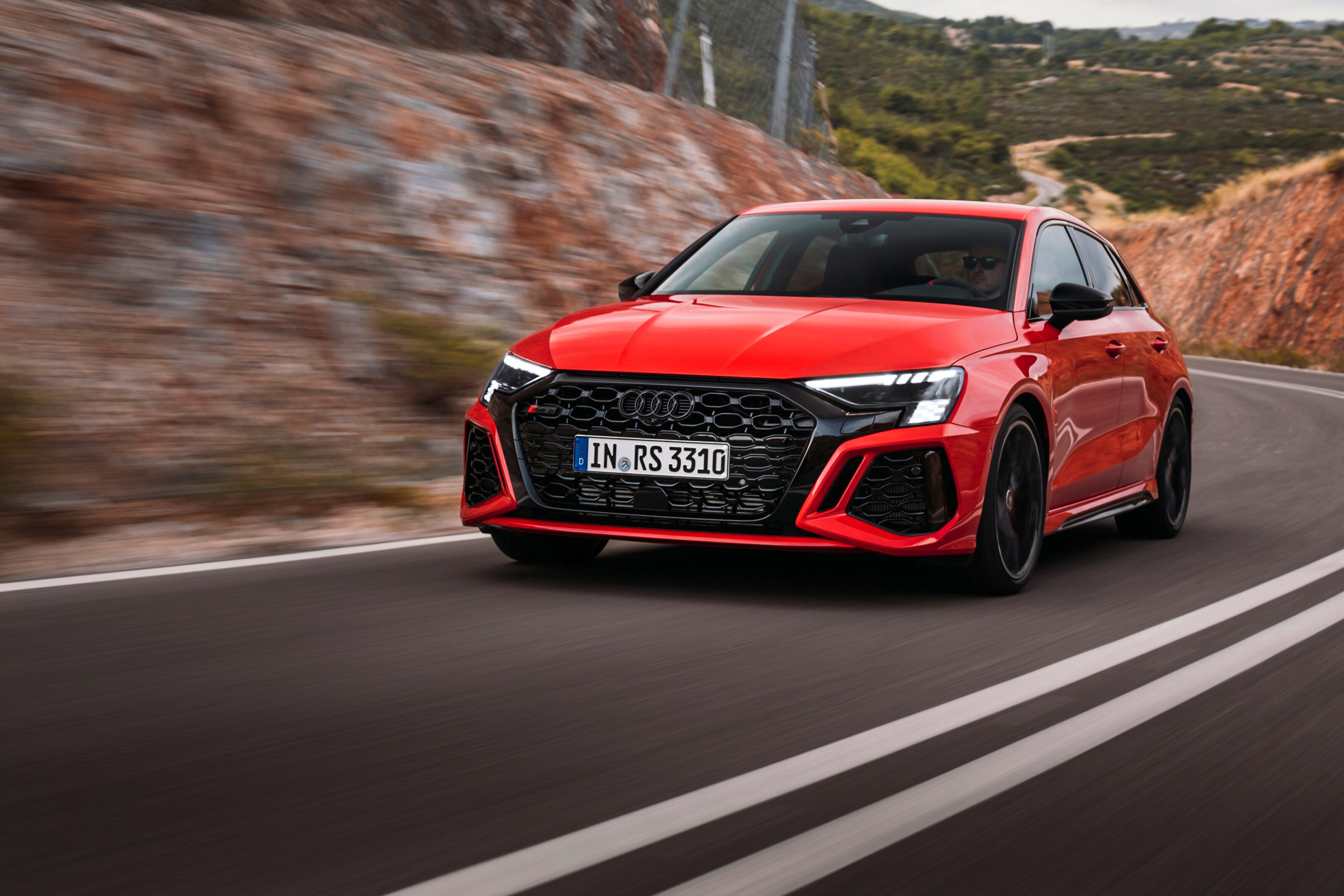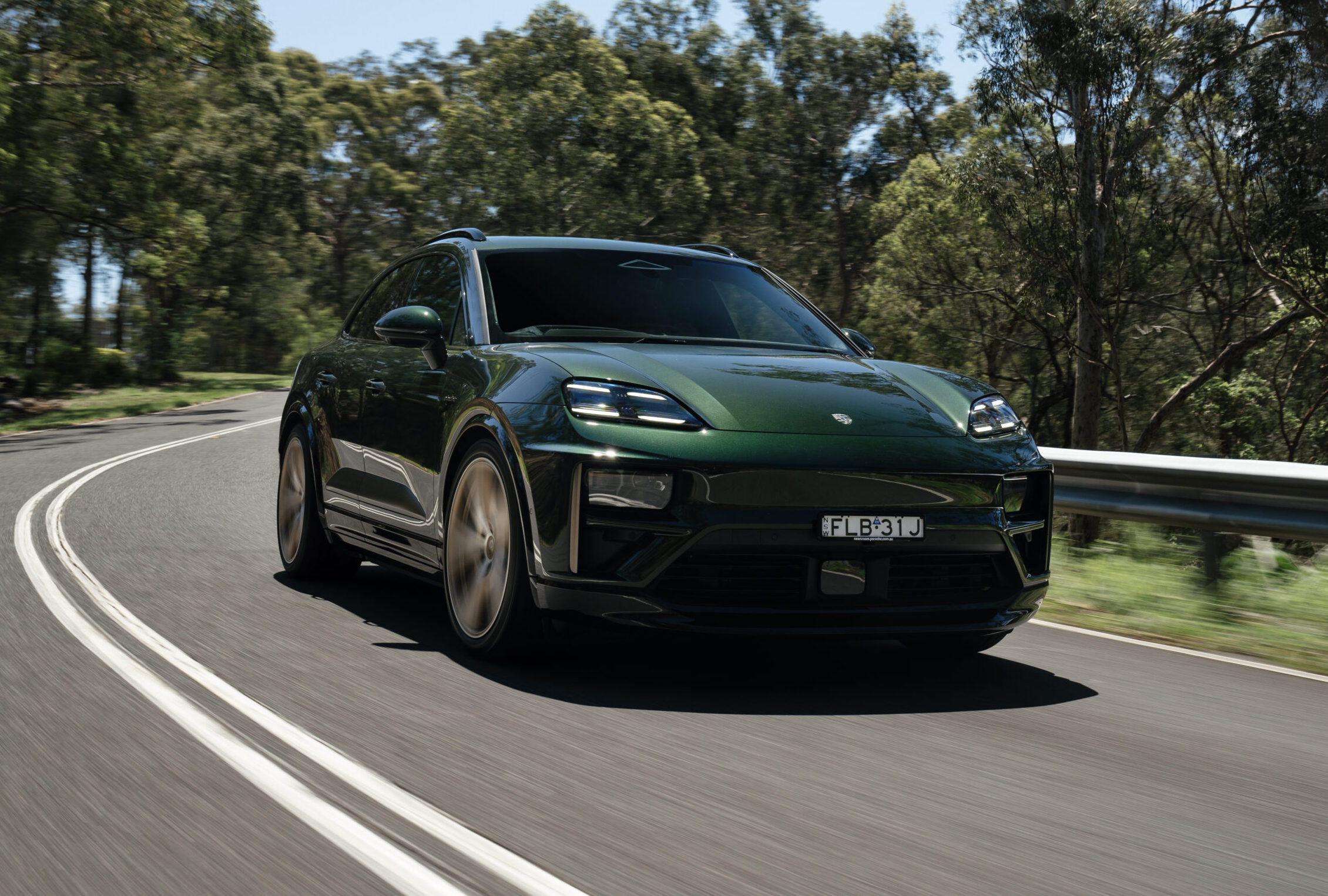Things we like
- Charismatic engine and stonking performance
- Excellent handling
- Improved ride (in Auto mode)
- Interior design and quality
Not so much
- Remote steering
- Ride (in Dynamic mode)
- Drivetrain lash, transmission calibration
It’s that spicy five that gives the Audi RS3 a special flavour. With its handful of cylinders, the odd-number engine has a distinctive offbeat sound. It evokes the 1980s World Rally Championship glory days of the original Quattro, while also making the Audi stand out among the four-cylinder rabble-rousers of the all-wheel-drive hot hatch elite.
But this new RS3 may be the last of the line. Next year Audi must decide whether or not to invest in updating its turbo five-cylinder to meet the tough Euro 7 emissions standards coming in 2026 or 2027.
It won’t be easy, admits Steffen Bamberger, Audi Sport’s head of technical development. The measures necessary to meet Euro 7 are costly, complex and bulky, and will take five years to develop.
As the shift to EVs accelerates, this is a risky investment. And it’s one Audi might well decide it doesn’t want to make. But though its long-term future is uncertain, there are years of liveliness left in the high-power five.
UPDATE, August 5, 2022: New RS3 driven in Australia
The new-generation RS3 is finally in Australia. You can read our review here, and watch Inwood’s track and road drive in the video below.
The story to here

For third-generation RS3, Audi Sport’s engineers haven’t sought more power from the 2.5 TFSI. It remains at 294kW, but torque has been increased slightly to 500Nm, broadening the range of revs where max power is produced in the process.
While the transmission remains a seven-speed double-clutch, there are big changes aft of the Audi’s engine compartment. The new RS3 has a torque-splitting rear axle, with a pair of electronically controlled multi-plate clutches.
It’s the same sort of tech as first seen in the Ford Focus RS of 2016, followed a few years later by the current Mercedes-AMG A45 S. At a glance, the Magna Powertrain-supplied rear axle of the new RS3 appears almost identical to the unit in the A45 S.
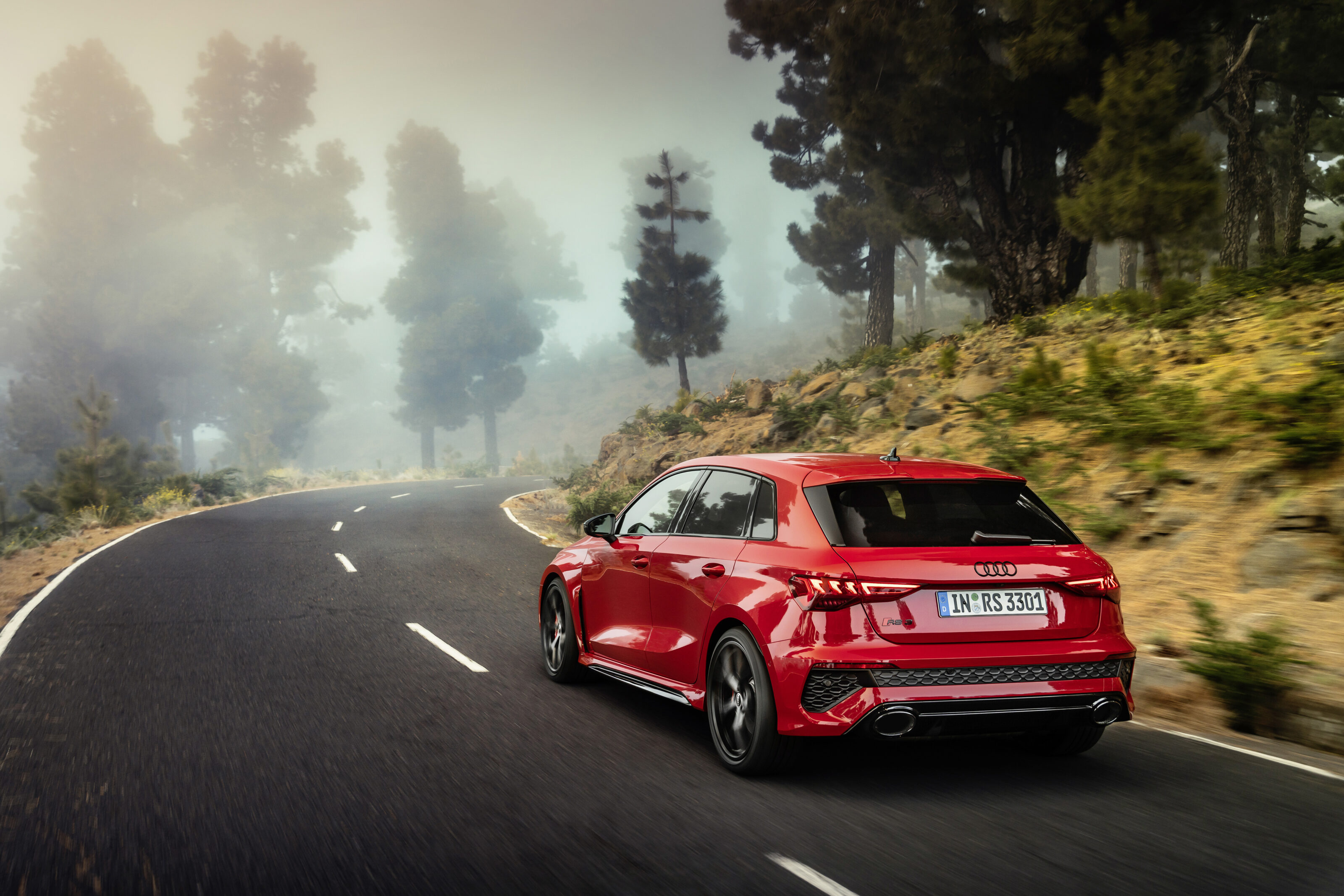
As in the Ford and the Mercedes-AMG, one of the primary purposes of the torque-splitting rear axle is to enable drift mode. When Audi Sport surveyed RS3 customers during the planning phase for the new model, many asked for it.
But the Audi’s rear axle does more than facilitate the rapid conversion of expensive tyres into clouds of stinky smoke. There are safety and handling benefits, too. Cornering stability and traction are enhanced. The axle’s torque-vectoring talent also means drive can be selectively channelled to just one of the rear wheels, quelling power-on understeer or oversteer as required.
With both axle clutches locked, rear-end traction is maximised. Though engine power is unchanged, the new RS3 accelerates 0-100km/h in a claimed 3.8 seconds. This is a three-tenths improvement over the outgoing model and a tenth better than the A45 S, the Audi’s arch-rival.
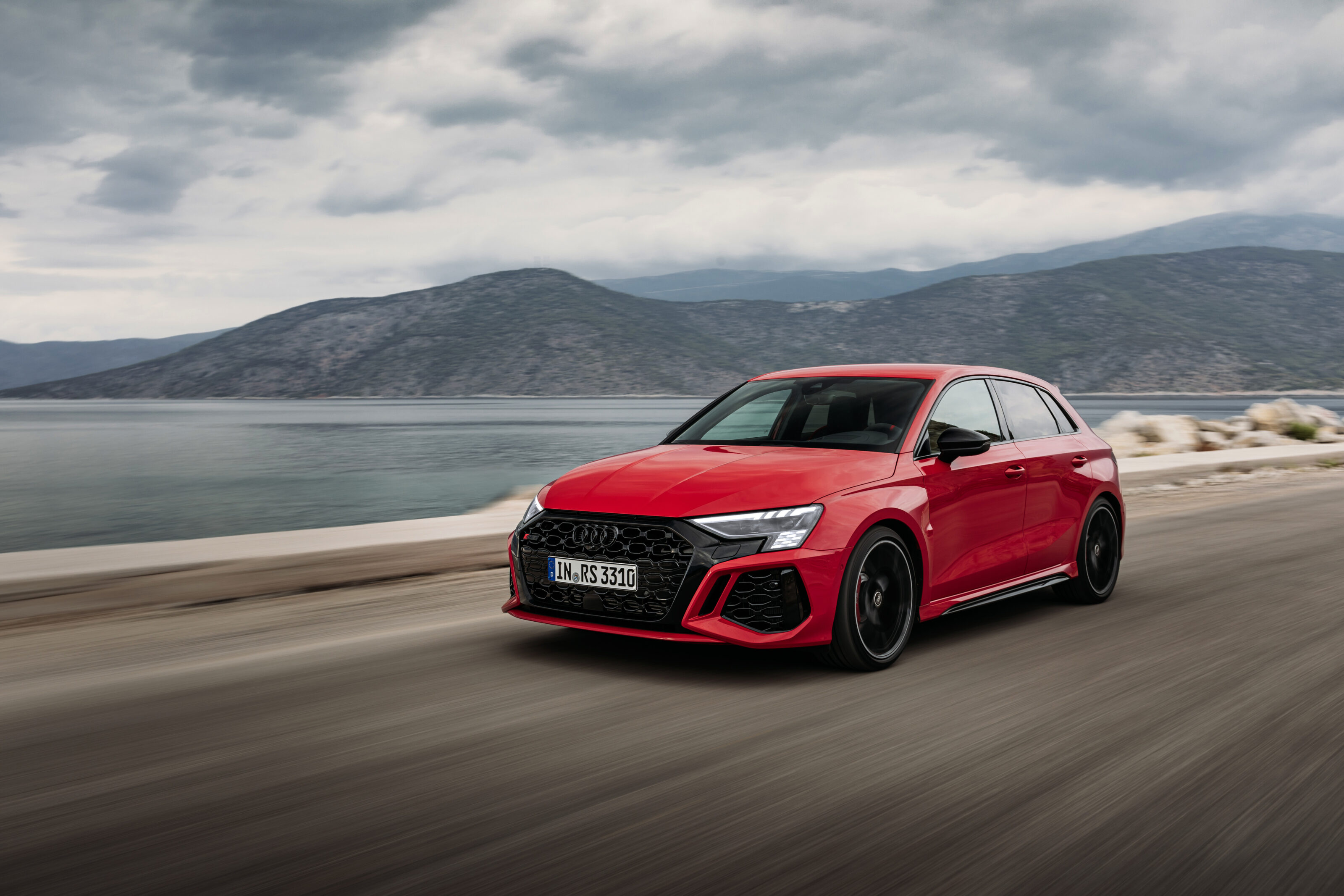
Chassis modifications follow a familiar RS3 pattern. Compared to the A3, front track is widened by 33mm, rear track by 10mm and ride height is 10mm than an S3, which in turn rides 15mm closer to the road than a regular A3.
The strut front suspension has RS3-specific knuckles that increase negative camber, while the multi-link rear suspension uses a stiffer mounting subframe and a firmer anti-roll bar that suits the characteristics of the torque-splitting rear axle.
One of the purposes of the torque-splitting rear axle is to enable drift mode. When Audi Sport surveyed RS3 customers, many asked for it.
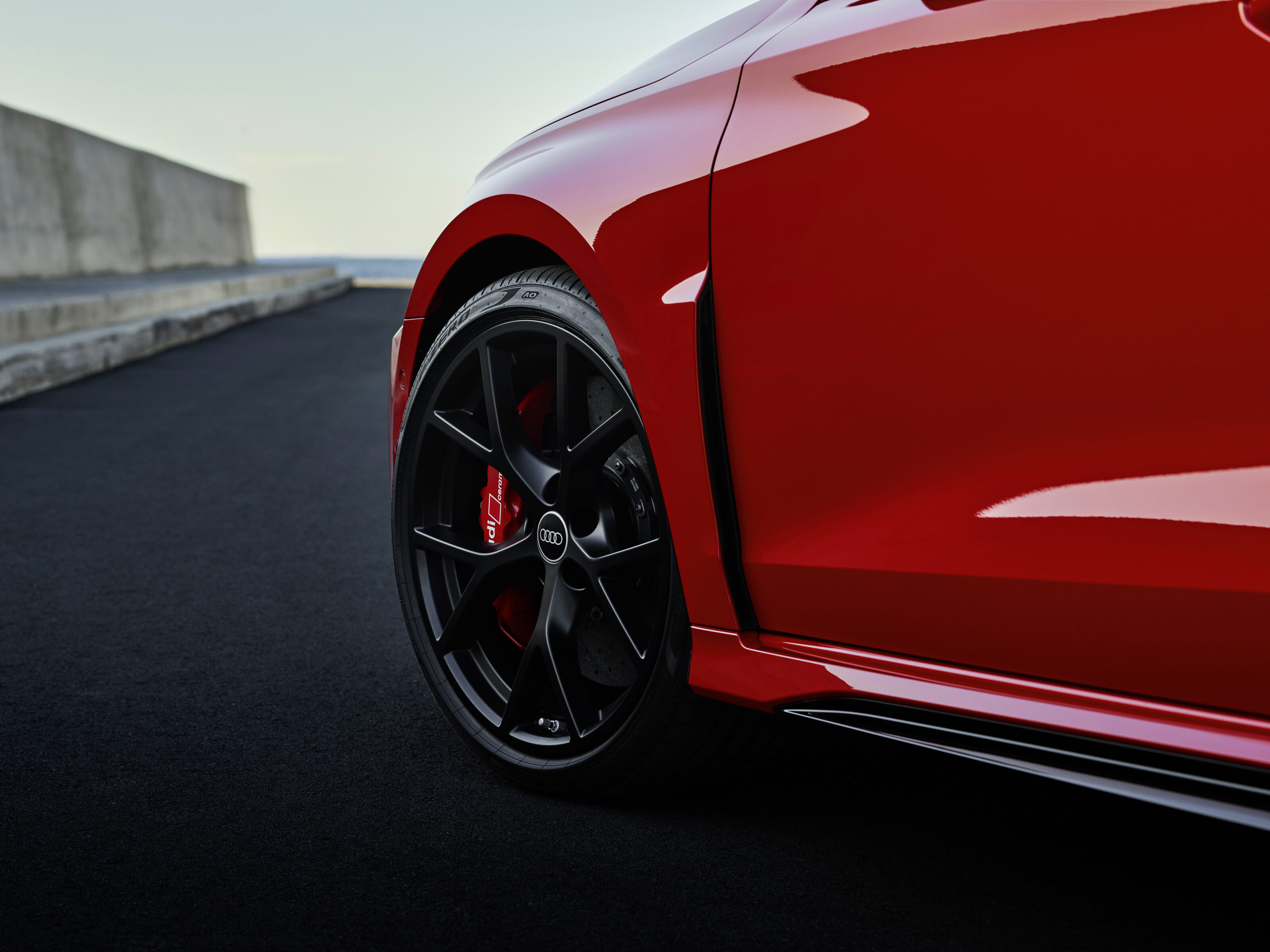
In Europe, optional adaptive dampers are an alternative to the standard passive set-up. They are electro-mechanical, tech which Audi engineers say now offers a greater range of tuneability than the current RS3’s optional magnetorheological dampers.
Bigger discs and new six-piston front calipers are the highlights of the brake system upgrades. There’s a carbon-ceramic brake package option and, for the first time, road-legal Pirelli P Zero Trofeo R semi-slick tyres can be ordered from the factory. As with the previous RS3, the new model’s 265/30ZR19 front tyres are wider than its 245/35ZR19 rears.
Along with the extensive hardware upgrades, Audi has made major changes to the car’s Drive Select system. The usual Comfort, Auto, Dynamic and customisable Individual modes remain. There’s now an extra Efficiency mode, which reduces power and torque. It could prove handy for drivers who find themselves low on fuel and far from a 98 octane pump.
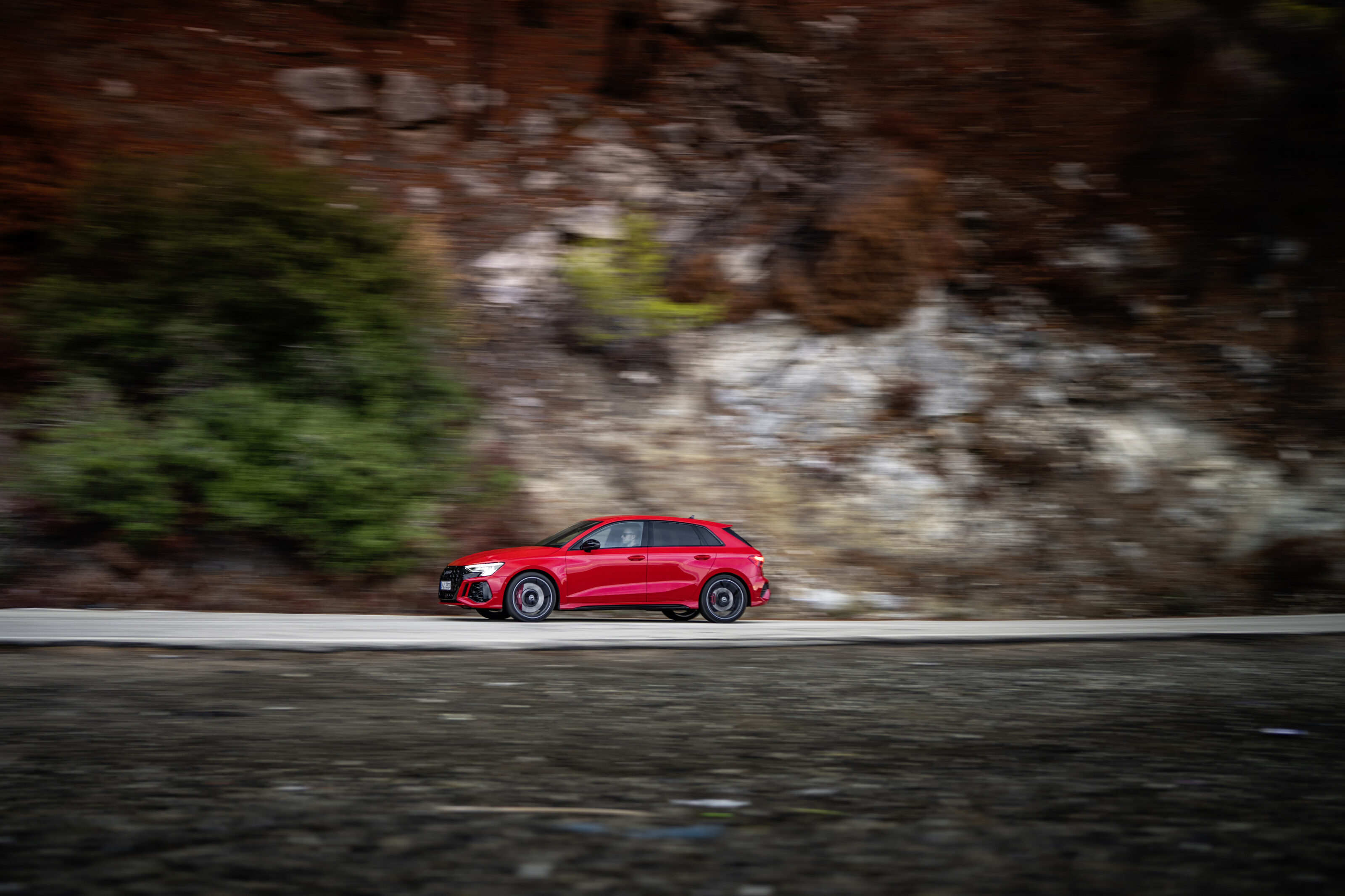
More important are the two new RS3-specific modes. One of them, RS Torque Rear, is drift mode by another name. The other, RS Performance, aims to optimise lap times. Within RS Performance, the driver has a choice between two set-ups, one for rough circuits like the Nurburgring and another for smooth tracks.
To burnish the RS3’s image ahead of launch, Audi race and development driver Frank Stippler set a compact category Nurburgring lap record in the car back in June. At a fraction under 7:41, the new RS3 is about five seconds swifter around the legendary German track than its predecessor.
Stippler drove a sedan for his record-setting lap. Both four-door and five-door Sportback versions of the RS3 went on sale in Europe in October. They’re scheduled to launch in Australia in the first half of 2022, although a first-quarter launch is anticipated. Expect the price list to open at around $90,000.
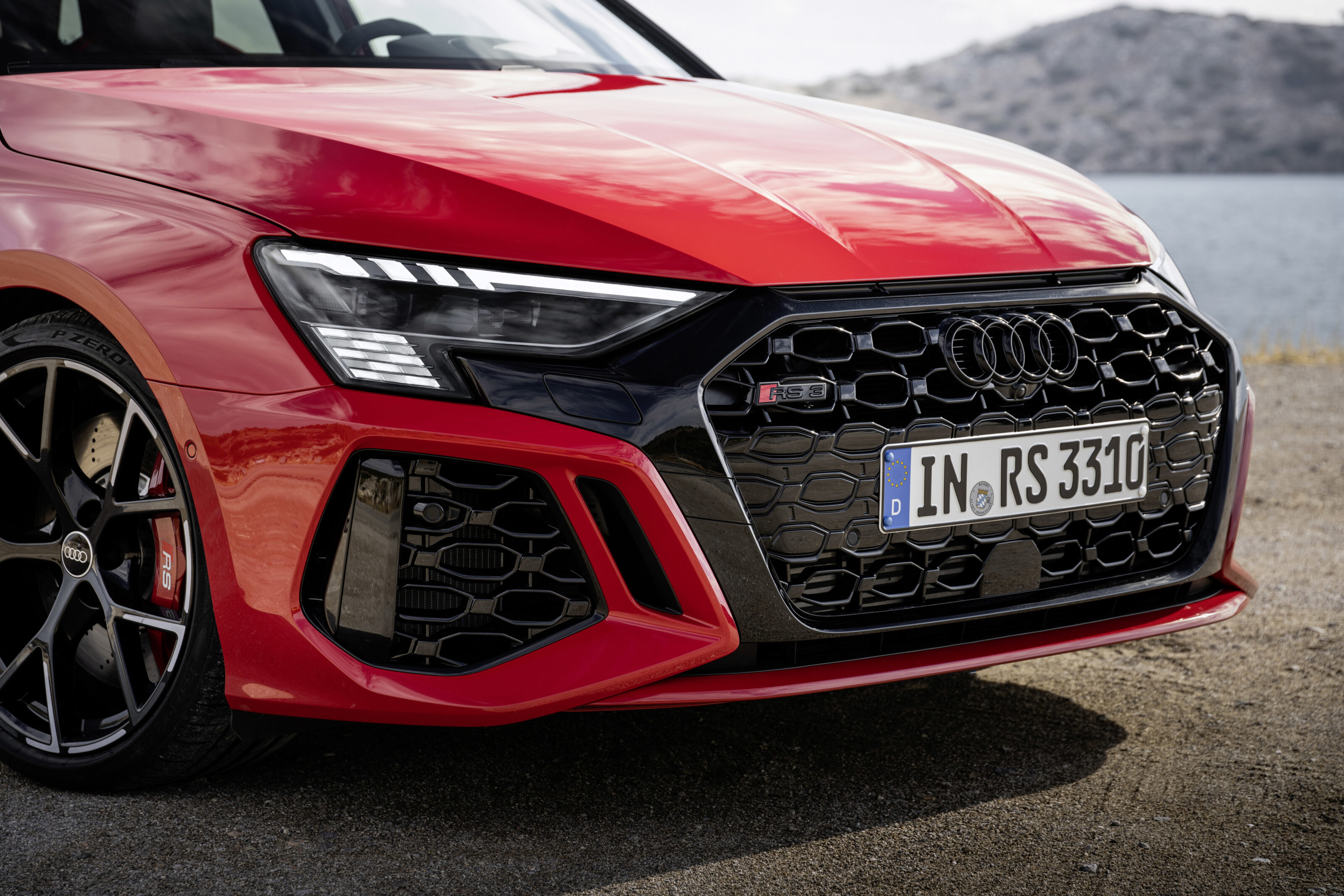
With flared guards to cover its wide-track front axle, black honeycomb grille, LED headlights, rear diffuser and an exterior colour palette seemingly inspired by Lamborghini, the RS3 isn’t designed for stealth.
The interior is excellent, adding plenty of premium tech and sporty substance to the Audi’s small-car practicality. Ahead of the snugly comfortable front seats, the instrument panel is a visual treat, especially with the optional body-colour accents across the centre of the face-level air vents. Both the centre infotainment touchscreen and the digital instrument cluster are deliciously crisp.
The optional Alcantara-covered flat-bottomed RS Design Package steering wheel is a delight, too. Its right-hand spoke includes an RS Mode button for instant access to the two new modes mentioned earlier.
At a fraction under 7:41, the new RS3 is about five seconds swifter around the legendary German track than its predecessor.
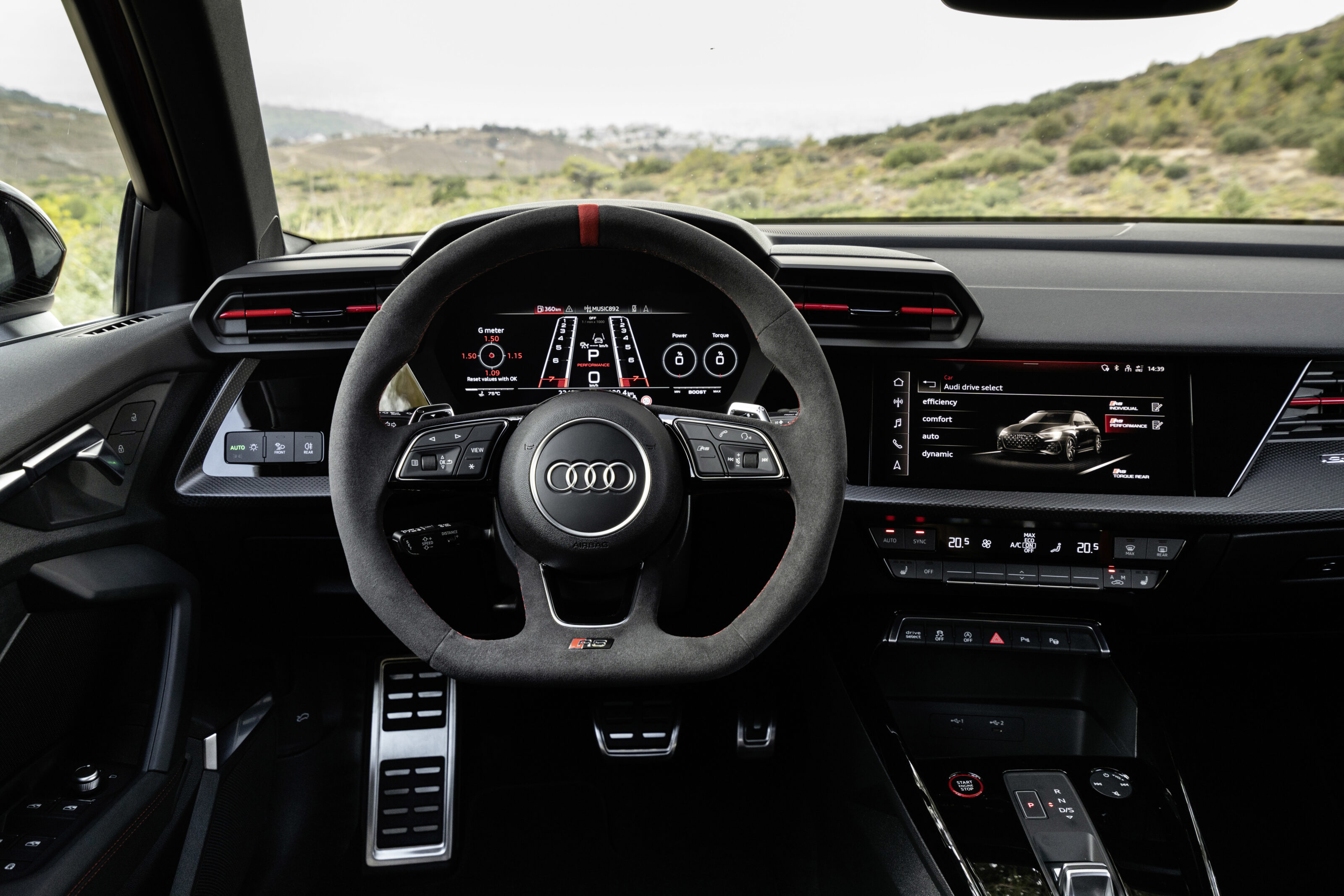
Selecting RS Torque Rear does indeed turn the RS3 into a drifter. It’s absurdly easy to get the Audi sideways, though circling and smoking with the elegance demonstrated by Frank Stippler proves impossible.
Audi chose Greece for the international press presentation of the RS. While the night-time drift-fest staged under lights in Athens’ deserted docklands was entertaining, the next day’s activities were more relevant.
The short racetrack outside the Greek capital hired by Audi was brutally lumpy in places. It highlighted the car’s strengths. In RS Performance mode, the Audi was both speedy and stable.
It shrugged off mid-corner bumps while accelerating hard and demonstrated determined resistance to the kind of gross understeer that had previously been a major handling shortcoming of the RS3.
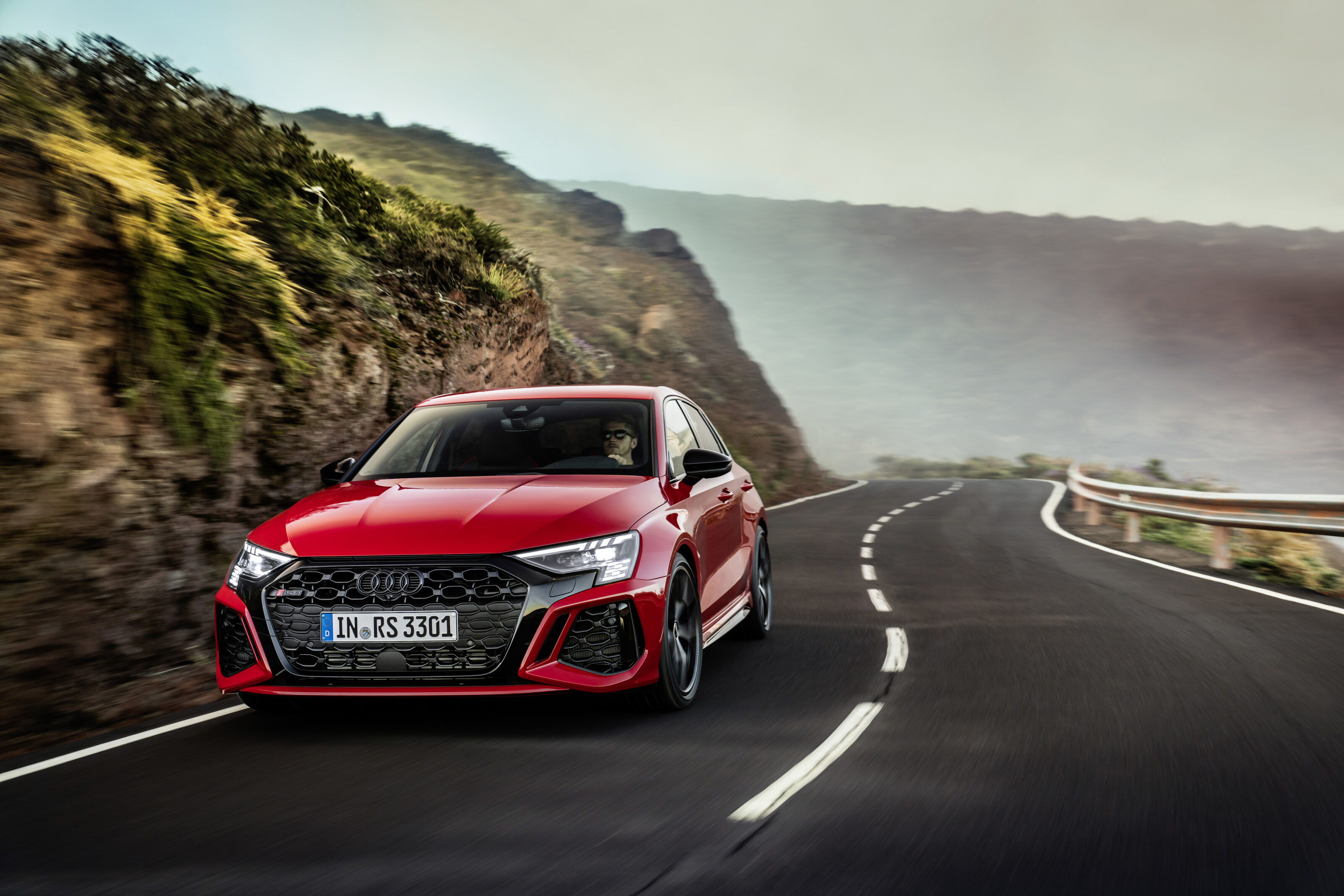
All the cars driven on the circuit had the optional semi-slick tyres and carbon-ceramic brake package. The brakes were truly impressive; fade-free, consistent and very strong, able to make the most of the Pirellis’ grip. The torque-splitting rear axle makes a real difference. You sense it aiding turn-in and balancing the car during full-blooded early-on-the-gas corner exits.
As ever, the engine is a gruff-voiced belter with great mid-range punch and top-end eagerness. The transmission control software does great work on the track, too, always delivering snappy, perfectly timed shifts.
While it awes, it falls short of awesome. Partly because of its precise but numb steering, the Audi feels hugely capable but vaguely clinical.
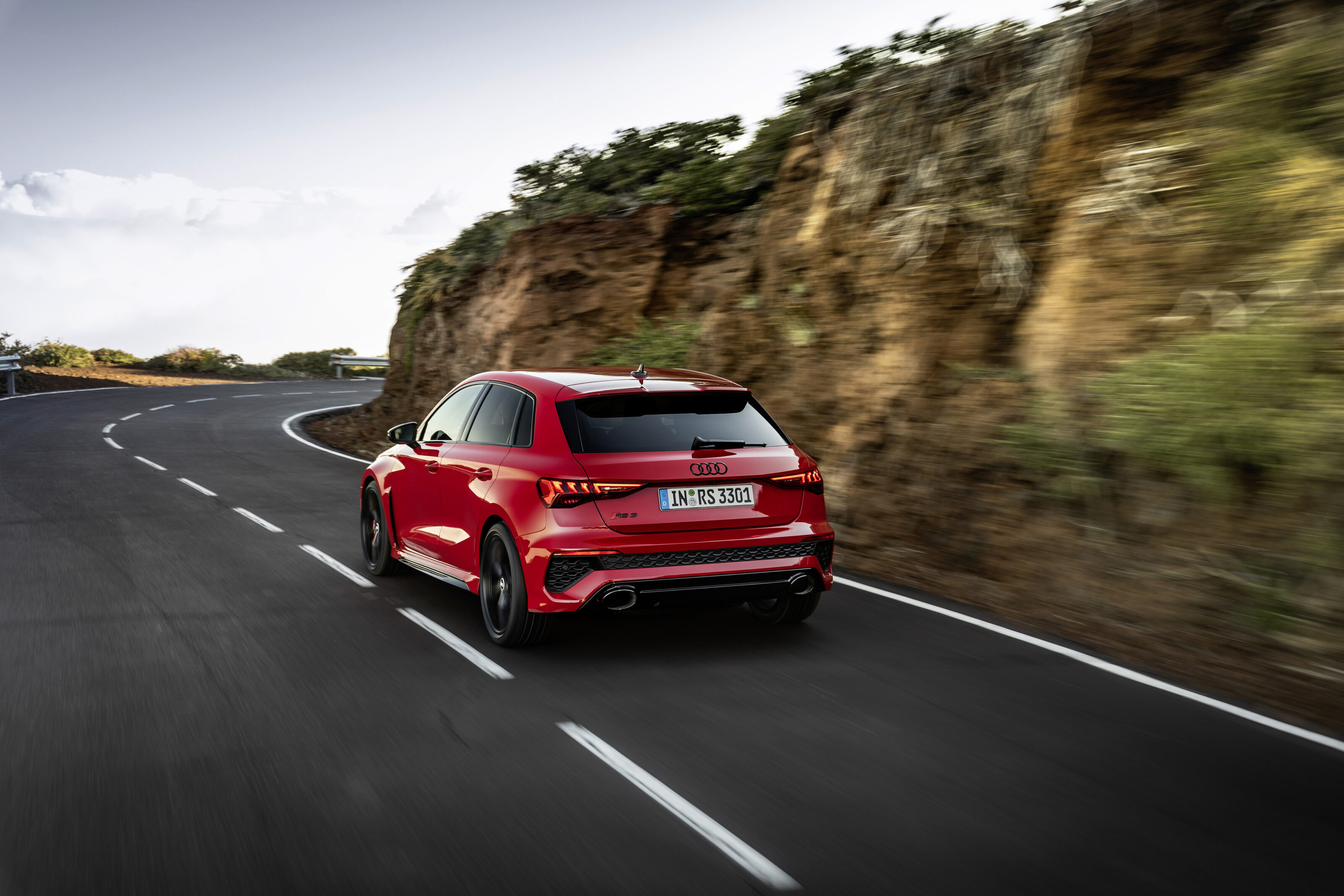
The understeer-killing qualities of the torque-splitting rear axle are as evident on the road as on the track. And tidier handling isn’t the only reason the new RS3 is a better day-to-day drive than the previous model.
Selecting Auto mode in the Drive Select menu reveals that the RS3, at least when equipped with adaptive dampers, can do comfy as well as sporty. Body motions are disciplined, but not harsh.
If harsh is what you want, try Dynamic instead. This mode is really only bearable on the smoothest of surfaces. The softer setting in RS Performance is probably a better choice than Dynamic for enthusiastic driving on typical Australian roads.
The torque-splitting rear axle makes a real difference. You sense it aiding turn-in and balancing the car during full-blooded early-on-the-gas corner exits.

The new RS3’s improved ride, combined with the engine’s elastic mid-range muscle, mean it now does chill as well as thrill. It’s happy to not hurry, and will be an easy-to-live-with daily driver.
There’s room for improvement, though. At low speeds, there’s occasional clunky shunting from somewhere in the driveline. Also, the drivetrain calibration could be improved; throttle tip-in is too aggressive in day-to-day Auto mode and the transmission sometimes responds tardily to throttle inputs.
Despite these quibbles, the new RS3 does what any new car should do; improve on the model it replaces. This Audi brings advances in performance, handling and comfort.
It’s a better RS3, no question. And given the uncertain future of Audi’s five-cylinder engine, that could make it the best RS3 of all time.
2022 Audi RS3 Sportback specifications
| Engine | 2480cc inline 4, DOHC, 20v, turbo |
|---|---|
| Max power | 294kW at 5600 to 7000rpm |
| Max torque | 500Nm at 2250 to 5600rpm |
| Transmission | 7-speed dual-clutch and AWD |
| Weight | 1570kg |
| 0-100km/h | 3.8sec (claimed) |
| Economy | 8.3 to 8.8L/100km (WLTP Europe) |
| Price | $90,000 (est) |
Things we like
- Charismatic engine and stonking performance
- Excellent handling
- Improved ride (in Auto mode)
- Interior design and quality
Not so much
- Remote steering
- Ride (in Dynamic mode)
- Drivetrain lash, transmission calibration


